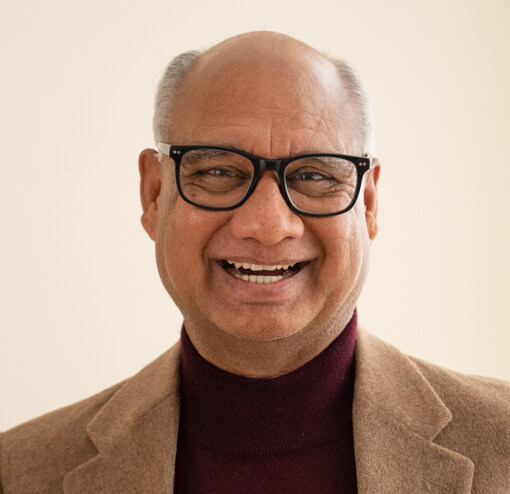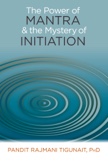Shaktipata is a transmission of spiritual energy from a master to a qualified and fully prepared student. According to the scriptures, there are many different kinds of shaktipata. All of them fall into two major categories: maha diksha (the highest level of initiation) and krama diksha (step-by-step initiation).
Maha diksha is the rarest form of shaktipata. Here spiritual energy is transmitted in its full brilliance, through an adept, to a perfectly prepared aspirant. Maha diksha is the means by which the master removes those subtle obstacles which are virtually impossible to eradicate by any other means. From this kind of shaktipata a student spontaneously reaches a state beyond mind called unmana—a state of awareness in which no thought constructs or modifications remain in the mind. The mind becomes an integral part of pure consciousness and no longer stands as a wall between the individual and universal being. The aspirant and Shiva—universal consciousness—become one. The yogi experiences pure existence, consciousness, and bliss as his intrinsic nature. Yoga texts call this state nirvikalpa samadhi. In the Upanishads it is called turiya (the fourth state, that transcends waking, dreaming, and deep sleep).
According to a prominent scripture, Saundaryalahari, the master confers maha diksha only after the student has completed a full course of mantra japa (repetition), which has cut most of the student’s karmic knots and loosened even the subtlest ones. Then maha diksha descends through the master. As a result, kundalini shakti awakens and travels upward, cutting asunder the three main knots: rudra granthi, vishnu granthi, and brahma granthi.
The yogi experiences pure existence, consciousness, and bliss as his intrinsic nature.
Granthi means “knot, or entanglement.” The knot created by the entanglements of tamasic karmas (those having the quality of dullness or inertia) are destroyed as the fire at the navel center is ignited and fanned. The scriptures refer to this as breaking the knot at the navel center (rudra granthi). Similarly, the power released by maha diksha frees the aspirant from the binding powers of sattvic (full of tranquility and clarity) and rajasic (full of desire and passion) karmas at the heart center (vishnu granthi) and at the center between the eyebrows (brahma granthi). The aspirant so blessed experiences the unfoldment of an infinite potential within, as kundalini shakti passes through the six lower chakras and enters the brahma nadi, the channel leading to the seventh and highest chakra, the sahasrara. The entrance to the brahma nadi is known as bindu, and the process of entering the bindu is called bindu bhedana. The force that enables this process is called anugraha shakti (grace).
This highest of shaktipatas is given by a master to a student in its totality only if that student is perfectly fit physically, emotionally, and intellectually, and it is conferred only on one who is expected to be the custodian of the lineage. At that moment the aspirant gains the experience of fourfold union: mantra, its presiding force, the master, and the aspirant’s self merge into one. It is a complete awakening.

By contrast, krama diksha is a process of gradual unfoldment of the inner shakti. The word krama means “sequence,” and in this context it means “step-by-step shaktipata.” Here a small amount of energy is transmitted at a time; when that energy is assimilated, the student is ready for the next step. Each step of the process becomes the ground for the following steps.
Practically speaking, krama diksha begins with mantra initiation. In a living tradition of yoga science, a master imparts her blessings in proportion to the capacity and preparedness of the student. The guru mantra is the first step and is the foundation on which the aspirant’s entire spiritual practice rests. From time to time the teacher may initiate the student into a variety of other practices, permitting spiritual energy to flow from the Source and illuminate the inner realm in the exact measure that a student can assimilate. According to the scriptures this energy descends in waves of gradually increasing intensity, and with each wave some karmas are destroyed and some obstacles disintegrate.
Krama diksha is an ongoing process of sadhana rather than a particular event. The different stages of this process bring about a qualitative change in our personality, and as these changes take place, both student and teacher spontaneously understand that one level of inner illumination has been reached. Whatever method the teacher uses for transmitting the next step is a form of krama diksha; this process continues to deepen and change as the student’s ability to assimilate it increases.
Evidence of Shaktipata
The surest sign of krama diksha is the natural unfoldment of clarity of mind and inner inspiration. As krama diksha unfolds we see the contrast between ordinary reality and higher reality, and as a result the mind is spontaneously free from doubts about the validity of inner reality and the existence of a higher purpose in life. We are motivated to do our practice more one-pointedly and wholeheartedly. The intensity of the experience may fade, but the memory remains, and that memory compels us to make ourselves available for another experience. But even if we do not attain that experience again after making sincere efforts, we cannot be defeated by frustration and doubt. We never drop our quest, no matter what obstacles confront us. If our constant effort becomes tiring, we pray instead of complaining. And prayer supported by the memory of the experience of shaktipata is full of spiritual yearning; it strengthens our desire for enlightenment.
Ordinarily, people do not want to experience God as much as they want to acquire worldly possessions and experiences through the grace of God. According to saints and yogis, when we long to receive the grace of God for its own sake, we have already been graced by the Divine. The desire for enlightenment and the longing to find God in this lifetime are definite signs of shaktipata.
The surest sign of krama diksha is the natural unfoldment of clarity of mind and inner inspiration.
Mantra siddhi (accomplishment) is another sign of shaktipata. This is a state in which mantra flows effortlessly and continuously, day and night, because the mantra has created such a deep groove in the mind that the mind rests constantly in mantra awareness. When we attain mantra siddhi our dream world is filled with mantra shakti, and our mind is filled with mantra awareness when we wake up in the morning. We feel secure and protected by the Divine in every area of life. Success and failure, loss and gain have little effect on our inner equilibrium, for we know that the external world is just a thin slice of reality. The experts say that if the mantra comes forward and rescues the frightened aspect of our being when we are having a nightmare, the process of mantra siddhi has begun.
After shaktipata the theories and practices described in the scriptures seem to unveil their meanings by themselves. Our understanding of the scriptures matches our inner experience, and we no longer feel the need to verify the validity of our scriptural understanding or to garner others’ opinions to support our knowledge. Our own knowledge is a source of inspiration and inner guidance in and of itself. This is where the domain of krama diksha ends. At the last phase of krama diksha we begin to intuitively feel the oneness between the teacher and the primordial master, God. We realize that the instrument—the teacher in human form—and God, who uses this instrument, are identical.
Now we enter the realm of maha diksha. We long to experience this oneness for ourselves. Without considering other teachers to be inferior, we are fully convinced that our teacher is Shiva himself, and as a result of this conviction an unwavering faith in the teacher unfolds. Effortlessly, we find ourselves totally surrendering to her. At this stage of conviction, faith, and self-surrender, all other relationships in the world lose their charm. The student-teacher relationship gives way to the master-disciple relationship. The teacher becomes the master. Intense longing to have a direct experience of the essence of the master is the condition under which we transcend the realm of krama diksha and enter the realm of maha diksha.
Note: In the next (final) post in this series, Pandit Tigunait explores the different ways in which the spiritual energy of shaktipata is transmitted, and he looks at how we can best retain its fruits.
Source: The Power of Mantra and the Mystery of Initiation by Pandit Rajmani Tigunait

